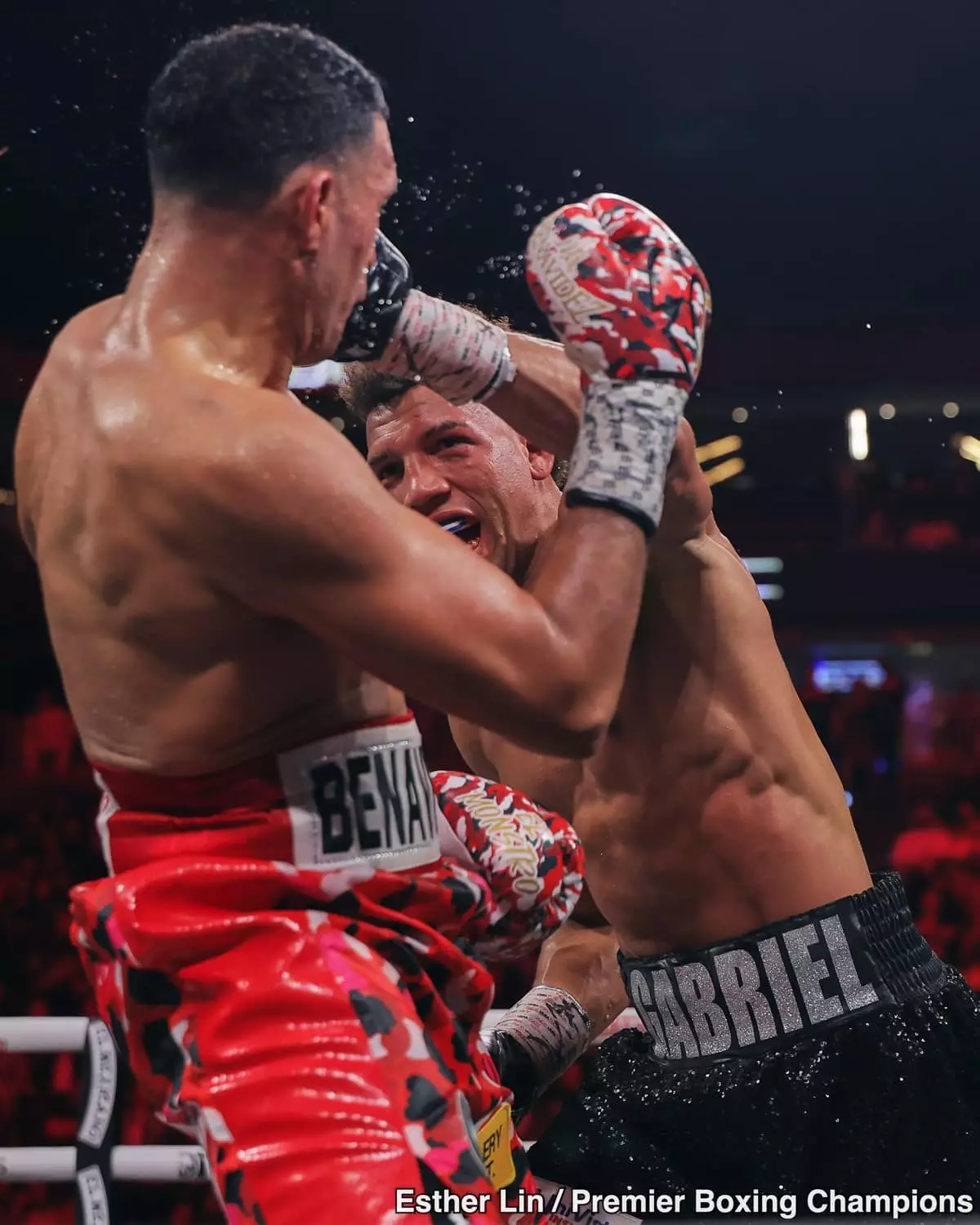The thrilling encounter between David Benavidez and David Morrell on Saturday night at the T-Mobile Arena in Las Vegas has sparked discussions that could resonate throughout the boxing world. The contest, a fiercely contested 12-round affair, showcased the intensity and unpredictability that characterize professional boxing. In the aftermath, perceptions of victory and defeat have flipped, making the idea of a rematch not just a possibility but a demand fueled by the fans. Promoter Sampson Lewkowicz has voiced his openness to another bout provided the audience expresses such a desire, underlining a growing appetite for engaging rematches in a sport where fans thrive on competition.
Benavidez, despite walking away with the unanimous decision victory, bore the physical scars of a challenging fight; his face was visibly swollen, evoking the look of a fighter who had endured a grueling battle. In stark contrast, Morrell emerged from the ring looking relatively unscathed, further complicating the narrative surrounding the fight’s outcome. This discrepancy raises critical questions about how boxing matches are scored and perceived. Did the judges fully encapsulate the ebbs and flows of the fight, or were their scores reflective of a broader misunderstanding in assessing professional fights compared to amateur bouts?
The official scores—115-111, 115-111, and a more lenient 118-108—suggested a one-sided encounter, yet the reality was far more nuanced. Many boxing analysts and devoted fans believe that Morrell’s impactful punches should have earned him a more favorable evaluation. Not only did he land significant shots, but he also dropped Benavidez in the 11th round, a moment that could have decisively swung the momentum. This leads us to ponder whether the judges missed the mark by focusing too heavily on Benavidez’s volume over Morrell’s precision and power, an imbalance that typically skews the perception of who was truly in control during the fight.
Adding fuel to the controversy was the decision to penalize Morrell for hitting after the bell. Such instances create a whirlwind of opinions regarding officiating in boxing, with fairness often hanging by a thread. Critics point out that Benavidez’s own after-the-bell hit may have warranted similar scrutiny, implying the need for a more consistent application of officiating standards within the sport. In the midst of this chaotic scoring landscape, both fighters find themselves at a crossroads, navigating their paths forward under the weight of public opinion and the longing for clarity.
As Lewkowicz analyzes the potential for a rematch, he also acknowledges the greater boxing landscape and the impending WBC decisions regarding title matches. With the Artur Beterbiev vs. Dmitry Bivol II fight looming, the winner’s obligations may dictate Benavidez’s next move. Should Bivol secure victory, it opens up the tantalizing possibility of a trilogy between him and Beterbiev, leaving Benavidez in a holding pattern. The rematch with Morrell, however, presents a compelling alternative—one that promises excitement and a chance for both fighters to settle the score, thus giving them an opportunity to engage with the fan base that increasingly craves high-stakes battles.
Lewkowicz’s insight regarding boxing’s unpredictability is noteworthy. While he articulates confidence in Benavidez’s victory in their initial bout, he also recognizes the fine line that can exist between winning and losing, particularly in rematch scenarios. The specter of past rematches—some of which turned out less favorable for Benavidez—hints at the inherent risks involved, but the potential for redemption could invigorate both fighters.
In sum, the aftermath of Benavidez vs. Morrell has not only ignited discussions about immediate rematches but highlighted the complexities of judging in boxing, the fans’ influence on the sport’s evolution, and the dynamic nature of professional fighters’ careers. As promoters, fighters, and fans navigate this thrilling but uncertain landscape, one thing is clear: the voices of the audience hold sway, and a well-publicized rematch could either serve as a platform for resolution or ignite further debates within the boxing community. The sport thrives on narratives like these, where the protocols of scoring and the essence of competition intertwine, creating a compelling viewing experience.

